Data acquisition
Data acquisition systems are products used to collect information from physical, chemical or electrical phenomenon.
As technology has progressed, this type of process has been simplified and made more accurate, versatile, and reliable through electronic equipment. Equipment ranges from simple recorders to sophisticated systems.
Data acquisition products serve as a focal point in a system tied together to a wide variety of sensors as such as temperature, flow, level, or pressure type.
In the term Data Acquisition are included several functions as such ADC, DAC, DIO.
Analog-to-digital converter (ADC): An electronic device that converts analog signals to digital form. The analog-to-digital converter is the main element of data acquisition systems.
Digital-to-Analog Converter (DAC): An electronic component found in many data acquisition devices that produce an analog output signal.
Digital Input/output (DIO): Refers to a type of data acquisition signal. Digital I/O are discrete signals which are either one of two states.
Communication buses: Data acquisitions systems can communicate to computer through various standard bus as such RS232, GPIB, PCI and PCI Express, cPCI/PXI, VPX, VME, LXI …
Resolution: The smallest signal increment that can be detected by a data acquisition system. Resolution are express in bits, 8 bits for a standard oscilloscope, up to 24 bits for the highest resolution available. 8-bit gives up to 256 steps to describe a signal.
Sampling rate: The speed at which a data acquisition system collects data. The speed is normally expressed in samples per second. For multi-channel data acquisition devices the sample rate is typically given as the speed of the analog-to-digital converter (A/D).
-
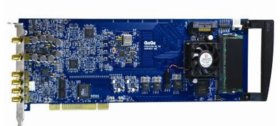
1250X
High speed data acquisition boards, 12-Bit, 500MS/s, PCI
- 1 or 2 digitizing channels
- 500 MS/s maximum sampling
-
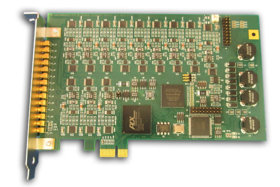
24DSI12WRCIEPE
24-Bit, 12-Channel, 105KSPS Transducer Input Module
- 12 wide-range 24-Bit unbalanced differential simultaneously-sampled analog inputs.
- Supports
-
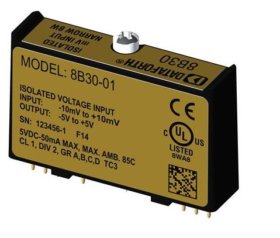
8B Series
Isolated Analog Signal Conditioners
- ±0.05% Accuracy (Typical)
- ±0.02% Linearity
- 1500Vrms Transformer Isolation
-
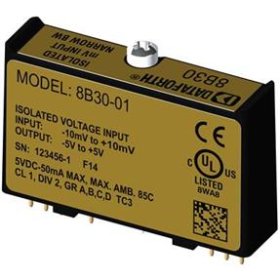
8B30
Millivoltage Input 8B Module, 3Hz Bandwidth
- Input Ranges ±10mV, ±50mV, ±100mV
- Output Ranges ±5V, 0-5V
-
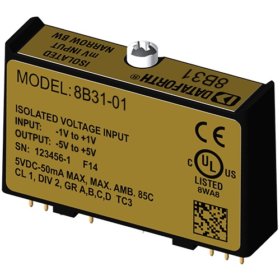
8B31
Voltage Input Module, 3Hz Bandwidth
- Input Ranges ±1V to ±60V
- Output Ranges ±5V, 0-5V
-
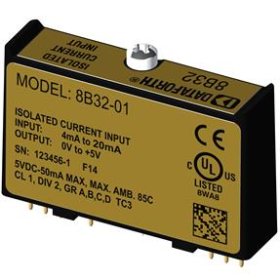
8B32
Current Input Module, 3Hz Bandwidth
- Input Ranges 4mA to 20mA or 0mA to 20mA
-
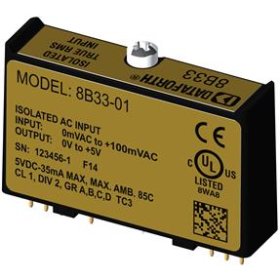
8B33
True RMS Input Module
- Input Ranges 100mV to 300Vrms, 0 to 1Arms
- Output
-
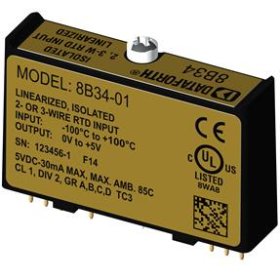
8B34
Linearised 2- or 3-Wire RTD Input 8B Module, 3Hz Bandwidth
- Input Ranges pt100 -200°C to +850°C
- Output Ranges 0-5V
-
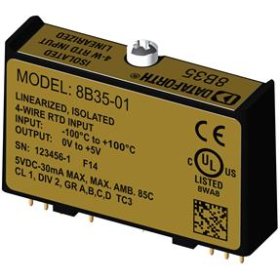
8B35
Linearised 4-Wire RTD Input Module, 3Hz Bandwidth
- Input Ranges pt100 -200°C to +850°C
- Output Ranges 0-5V
-
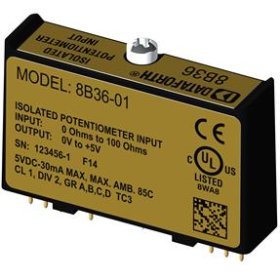
8B36
Potentiometer Input Module, 3Hz Bandwidth
- Input Ranges 0 to 10kΩ
- Output Ranges 0-5V
- Isolation
-
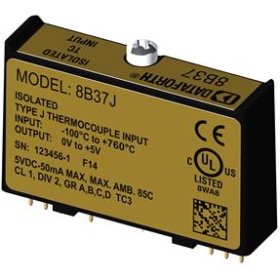
8B37
Thermocouple Input Modules
- Interfaces to Types J, K, T, R, and S
-
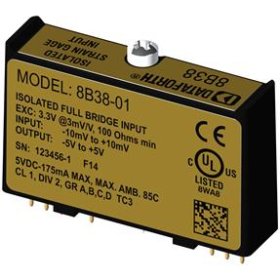
8B38
Strain Gauge Signal Conditioning Module, 3Hz or 8kHz Bandwidth
- Interfaces to 100Ω Thru 2kΩ Full-Bridge Strain Gages
- Output
